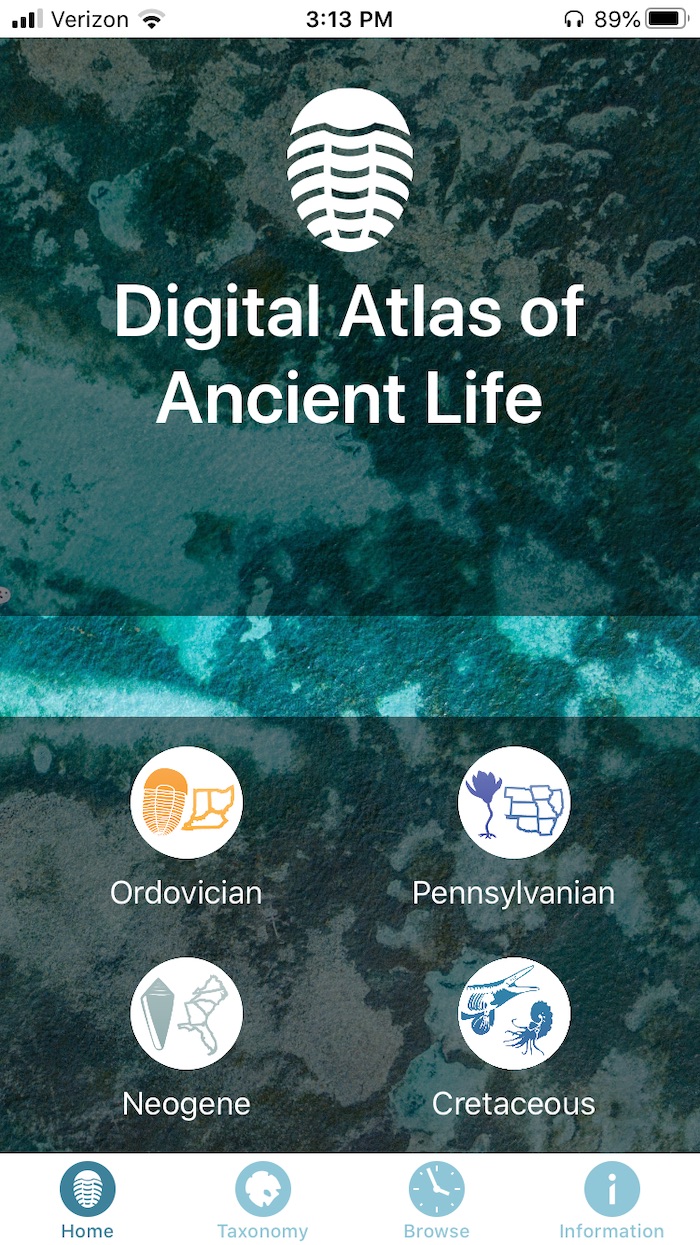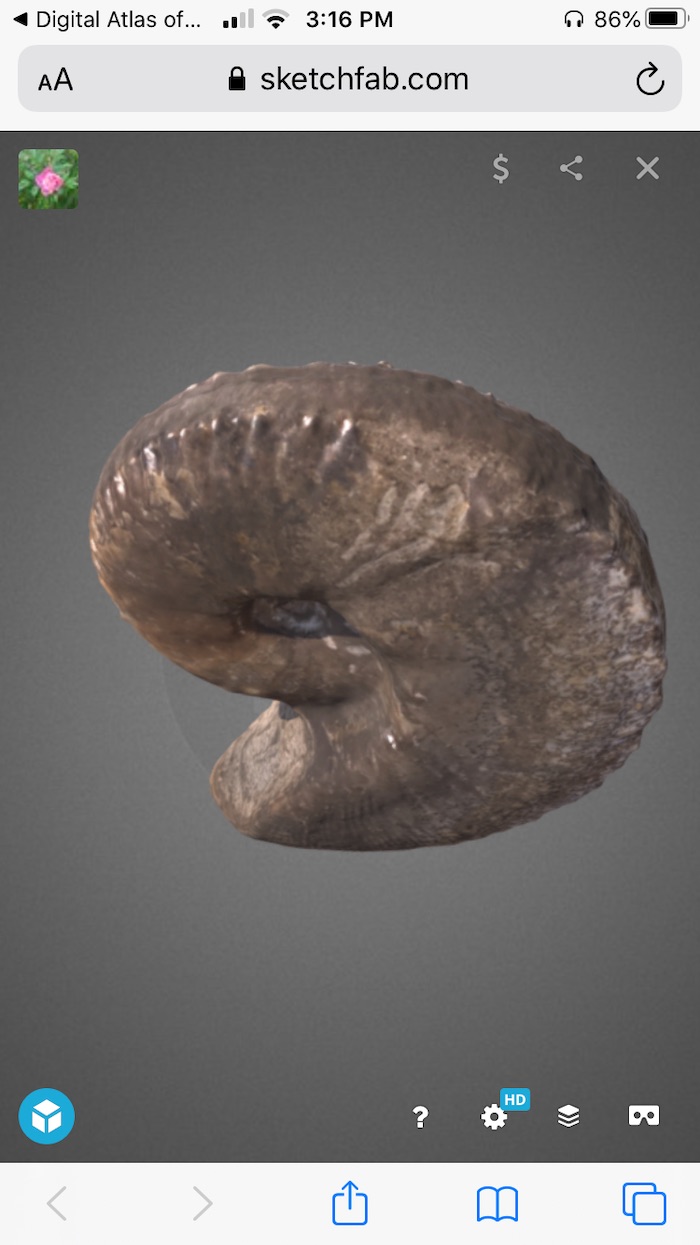New version of fossil-recognition app now works on Android smartphones and includes Cretaceous period
LAWRENCE — In 2015, when researchers at the University of Kansas Biodiversity Institute and Natural History Museum released the free Digital Atlas of Ancient Life app, they didn’t know what kind of reception the smartphone-based field guide might receive.

Fast forward a few years, and the app has 7,500 active users in the U.S., Canada and beyond, despite the fact that the original app was limited to use on iPhones and exclusively focused on fossils with origins in the Pennsylvanian, Ordovician and Neogene periods.
Based on this success, the creators of the Digital Atlas of Ancient Life have released an updated version that works on smartphones with an Android-based operating system (and also works on iPhones).
“There were a lot of people who had Android phones that couldn’t use the app,” said Bruce Lieberman, senior curator at the institute and professor of ecology & evolutionary biology, who is leading the team behind the app. “Sometimes we would say, ‘Here's this great app,’ and they would say, ‘Oh, but I’m an Android user.’ And it was like ‘oh well.’ So, we’re excited the update could open up a larger potential audience for this.”
What’s more, the updated app can help users identify fossils from the Cretaceous, a period that started about 145 million years ago and ended 66 million years ago when the dinosaurs were killed off by a space object.

“We've added in the Cretaceous time period,” Lieberman said. “This includes basically all of the rocks from the classic chalk of Kansas and elsewhere in North America. That’s a big addition. We've also added in fossil vertebrates. Before, we only had the invertebrates. But for the Cretaceous time period we also have vertebrates — things like fossil sharks, fossil mosasaurs – we even have a few dinosaurs, but not too many because most are not found in marine rocks.”
Additionally, Lieberman and his colleagues have updated the app’s look and feel as well as the database that underpins the app.
“The architecture and the programming make it even easier for the user now,” Lieberman said.
The KU researcher’s team on the Digital Atlas of Ancient Life 2.0 includes Rod Spears and Zach Spears, who programmed and designed the app update, along with Jonathan Hendricks of the Paleontological Research Institution in Ithaca, New York, who added many of the new images from the Cretaceous.
Like the first version of the Digital Atlas of Ancient Life, version 2.0 was developed via support from the National Science Foundation and is aimed at K-12 educators, students, fossil enthusiasts and anyone with an interest in fossils.
“We’re interested in making our science more accessible to the general public,” Lieberman said. “We know people are captivated by paleontology and interested in fossils. The app links to pictures, maps and information about how long ago fossils occurred. We thought, ‘Hey, when people are out finding fossils, they’re not on their computer.’ They might be out walking, pick up a fossil and think, ‘Cool! What species is this? Where have others like this one been found?’”
The app’s more robust new database features photos and geographic-distribution information on fossil specimens from the collections of multiple natural-history institutions.
“It’s a way for anyone to find species in the field and learn something about them, be they farmers, amateur paleontologists, teachers of earth sciences or biologists,” Lieberman said. “Certainly, some professional paleontologists could use it. We wanted to distill scientific information gathered over many years.”
Indeed, discovering fossils is easier than many people imagine, Lieberman said.
“The best thing to do is look around a road cut or a little quarry where rocks are exposed, so you don’t have to do a lot of digging,” he said. “In Kansas, many of those yellow rocks that you see are packed with fossils — some are 100 percent fossils. Of course, don’t stop along a busy stretch of road or an interstate. But on all other roads, at least in Kansas, as long as you’re cautious, those layers of yellow rock expose fossils at road cuts. You can just bang a fossil out.”
Images courtesy of Bruce Lieberman, senior curator at the institute and professor of ecology & evolutionary biology at the University of Kansas.